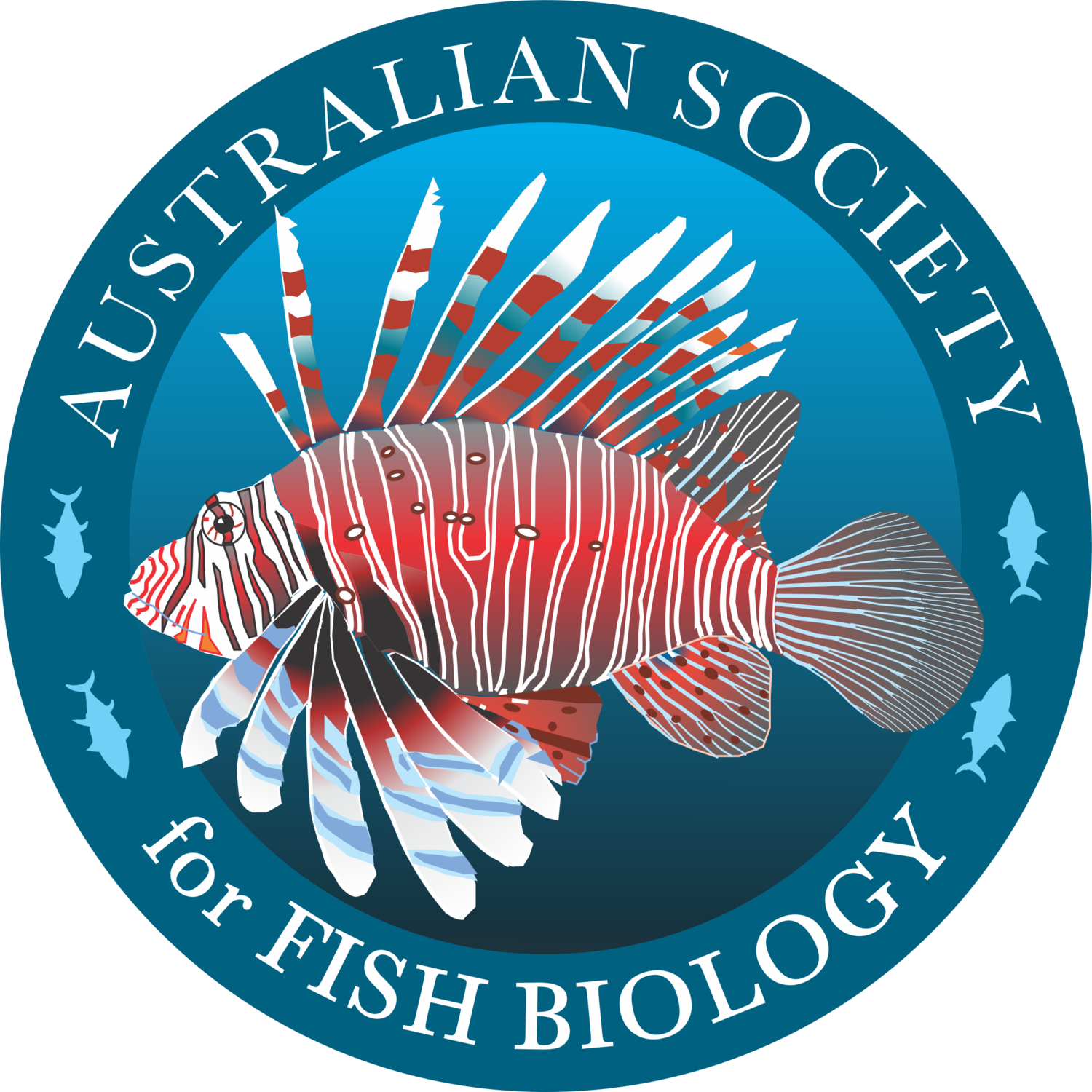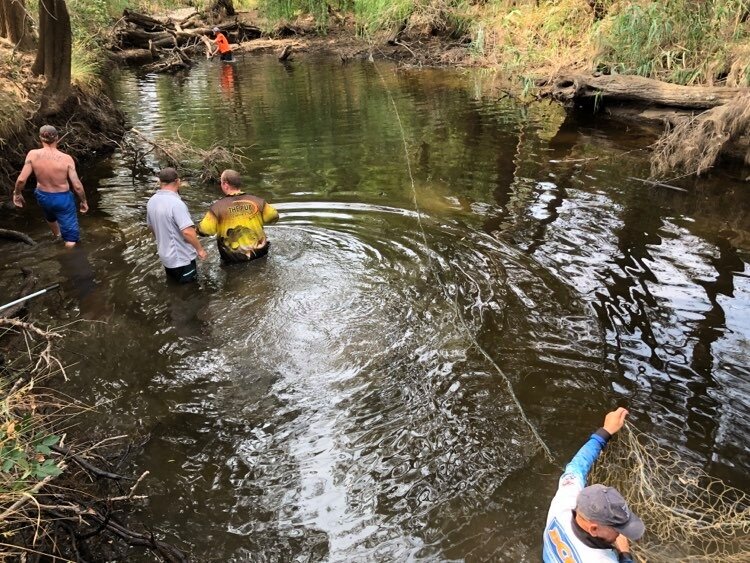Building the ark: the NSW Native Fish Drought Response in 2019/20
Cam Lay describes how river managers and community members collaborated to help native fish survive an especially tough year of drought.
A Murray cod rescued and relocated along the Lower Darling in September 2019.
The fish community of the Murray-Darling Basin has suffered a series of significant fish kill events in recent decades, culminating in the mass deaths of millions of native fish in the Lower Darling River, near Menindee, during the summer of 2018/19. The fish kills were linked to prolonged low-flow or cease-to-flow conditions and extreme temperatures in which habitat condition and water quality deteriorated to lethal levels.
The scale of this event was unprecedented and, in the lead up to the 2019/20 summer season, the NSW Department of Primary Industries (NSW DPI) held further concerns for fish deaths as a continuation of the dry and very low flow conditions persisted across the Murray-Darling Basin.
Our objective was quite simple: to protect as many native fish as possible across priority reaches of the NSW Murray-Darling Basin.
Using the lessons learnt from the past, including from the 2018/19 summer, efforts would be focused on supporting refuge populations to enhance recovery when conditions improved.
To combat the worst drought on record, the NSW Government announced a $10 million package to help protect native fish stocks through the NSW Native Fish Drought Response program. The work focused on planning, preparedness, response and, ultimately, recovery activities. These efforts included:
formation of valley-based technical assessment groups (VTAG) to involve local experts in forming recommendations and decision-making
monitoring activities, including water quality and fish community impacts
rescue and relocation of native fish, with a focus on threatened species
artificial aeration and water mixing in key reaches
targeted delivery of environmental water, where available
fishing closures around artificial aerators.
Within each valley, DPI Fisheries worked closely with local experts, First Nations people, communities and recreational fishers to identify priority locations when assessing and planning for drought response work. Each VTAG sought to gather the best available information from diverse sources that shaped the specific advice for their local river system. We also relied on landholders to monitor water quality conditions on their properties and report any changes in water quality to the Fishers Watch Phoneline.
A group of volunteers assist DPI Fisheries staff at a fish rescue operation on the Peel River, in January 2020. Rescued fish were transported to a private hatchery in Wagga Wagga.
More than 4,400 fish were rescued and relocated in the Lower Darling, Macquarie, Namoi, Peel, Border Rivers, Gwydir and Murrumbidgee valleys to government and private hatcheries or to better quality refugia. Across the state, volunteers from local fishing clubs and landholders rolled up their sleeves and got to work, under permits and close consultation with DPI Fisheries, to rescue fish from refuge pools that were at risk of drying out.
These efforts were complemented by the installation of 47 artificial aeration units in the Lower Darling, Upper Murray, Macquarie and Peel catchments to support refuge populations in situ. This broadened to the support for a range of native species that were not represented in rescue and relocation efforts.
The public’s interest and involvement in the work was immense. In addition to helping with on-ground actions, many people engaged with DPI Fisheries staff across the state, including through drought information sessions in the Northern Basin and the DPI Drought Bus, which toured throughout the state. Lower Darling communities joined us for further information sessions where demonstrations on the collection of water quality data and other actions needed to help support our native fish populations were given.
The arrival of some much-needed rain in early 2020 across parts of north-west NSW and southern Queensland gave our native fish a chance to breathe again, with many systems experiencing a resumption of flow. Parts of the Northern Basin received more than 200 mm of rain, which created significant inflows into the Border Rivers, Peel, Namoi, Gwydir and Macquarie valleys, and subsequently the Barwon-Darling River.
These flows did bring with them their own challenges for fish, with organic material loads impacting water quality during the initial flush. However, the inflows resulted in connected systems across the Northern Basin, including along the Barwon-Darling and Lower Darling rivers, with new inflows into the Menindee Lakes and ultimately connection to the Murray River.
The path to recovery will be long, and will require action from communities and governments at a local and Basin-wide scale. Our actions under the drought response program have focused on limiting the impact of immediate threats; however, the more systemic issues that have impacted native fish populations remain. Meeting these challenges through strategic investment that operates at appropriate timeframes and scales will ultimately decide the fate of our native fish populations.
The work done over the last summer across inland NSW will help inform and refine our future response to extreme events. Central to this has been the support of volunteers and the communities that partnered with us to achieve some great outcomes for fish. With recent rainfall giving the Ark a chance to float, it’s now time to sail the waters towards the recovery of native fish populations across the Basin.
Cam Lay is the NSW Native Fish Drought Response Coordinator. For more information on this project, visit the Native Fish Drought Response webpage and the Fish Kill webpage. This article was originally published in the July 2020 edition of Lateral Lines, the official ASFB newsletter.


